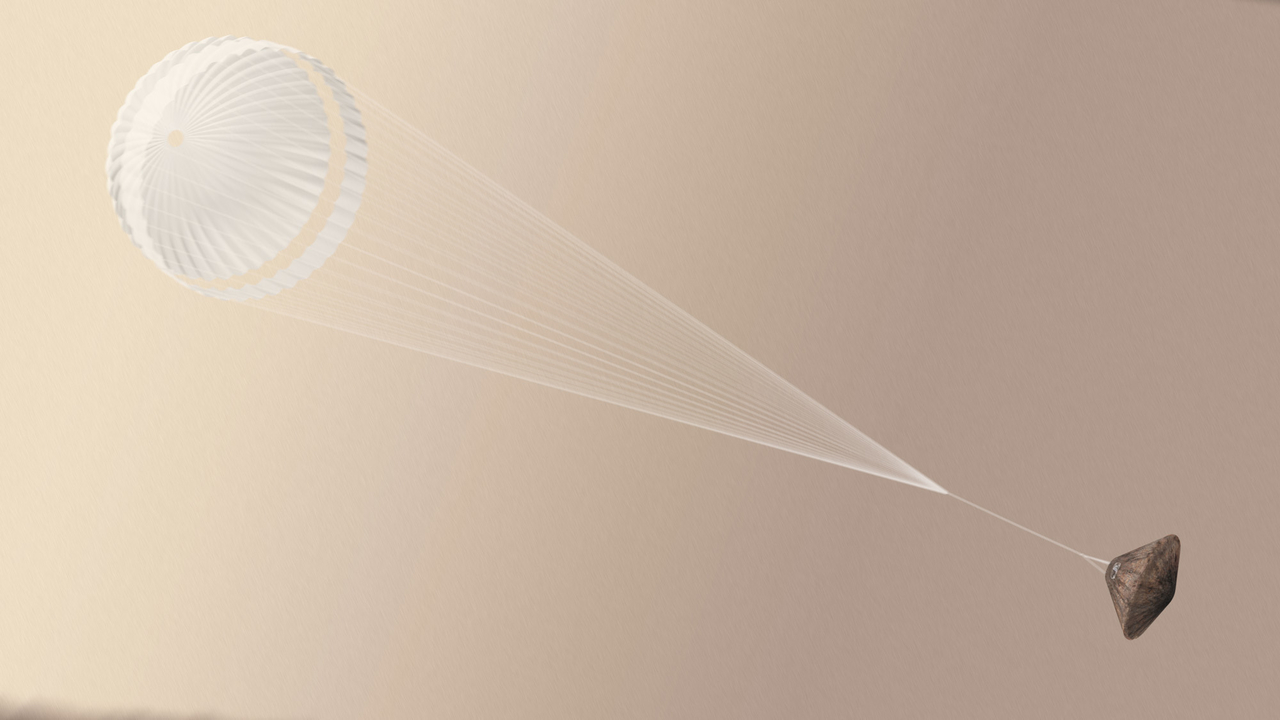
The suspense is killing us.
The Schiaparelli lander, part of the European-led ExoMars 2016 mission, was supposed to touch down on the Red Planet this morning (Oct. 19) at 10:48 a.m. EDT (1448 GMT), but the spacecraft's handler's still don't know whether or not the historic maneuver was successful. You can watch a live webcast of the ExoMars landing here, courtesy of the European Space Agency (ESA).
"Initial signals were received via the Giant Metrewave Radio Telescope (GMRT) as Schiaparelli descended to the surface of Mars, but no signal of touchdown yet," ESA officials wrote in a blog post at 11:12 a.m. EDT (1512 GMT) today. "This is not unexpected due to the very faint nature of the signal received at GMRT. A clearer assessment of the situation will come when ESA's Mars Express will have relayed the recording of Schiaparelli's entry, descent and landing." [The Best (and Worst) Mars Landings of All Time]
But there is good news already: The Trace Gas Orbiter (TGO), the other part of ExoMars 2016, slipped into orbit around the Red Planet as planned today after completing a crucial two-hour engine burn, ESA officials said.
Schiaparelli is a technology demonstrator whose main purpose is proving out the landing system that will place the life-hunting ExoMars 2020 rover on the Red Planet's surface a few years from now. TGO was designed to scan the Martian atmosphere for methane and other gases that could be signs of life.
ESA leads the two-phase ExoMars program, with the Russian space agency Roscosmos as chief partner.
Follow Mike Wall on Twitter @michaeldwall and Google+. Follow us @Spacedotcom, Facebook or Google+. Originally published on Space.com.
Get the Space.com Newsletter
Breaking space news, the latest updates on rocket launches, skywatching events and more!
Join our Space Forums to keep talking space on the latest missions, night sky and more! And if you have a news tip, correction or comment, let us know at: community@space.com.

Michael Wall is a Senior Space Writer with Space.com and joined the team in 2010. He primarily covers exoplanets, spaceflight and military space, but has been known to dabble in the space art beat. His book about the search for alien life, "Out There," was published on Nov. 13, 2018. Before becoming a science writer, Michael worked as a herpetologist and wildlife biologist. He has a Ph.D. in evolutionary biology from the University of Sydney, Australia, a bachelor's degree from the University of Arizona, and a graduate certificate in science writing from the University of California, Santa Cruz. To find out what his latest project is, you can follow Michael on Twitter.










